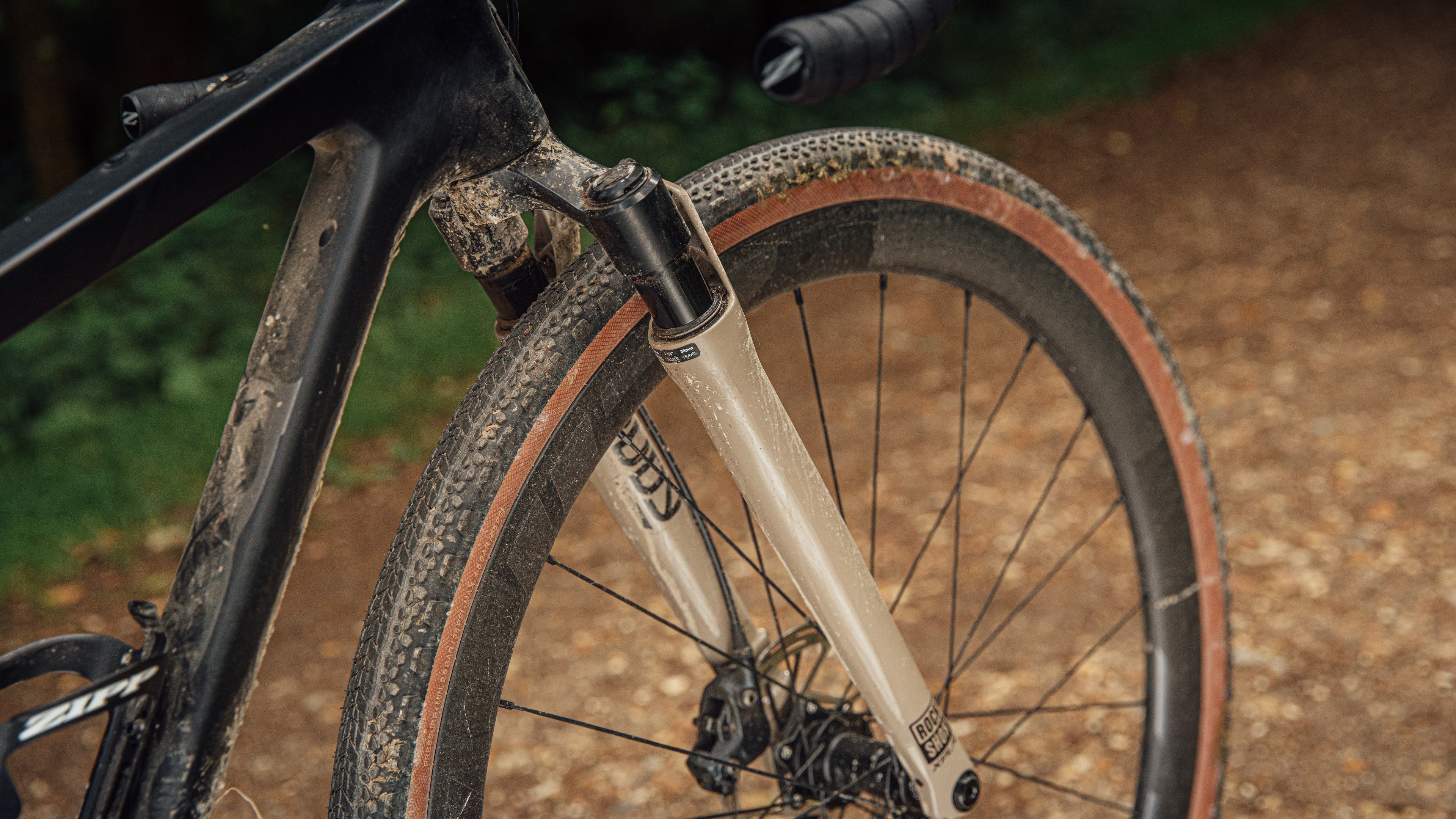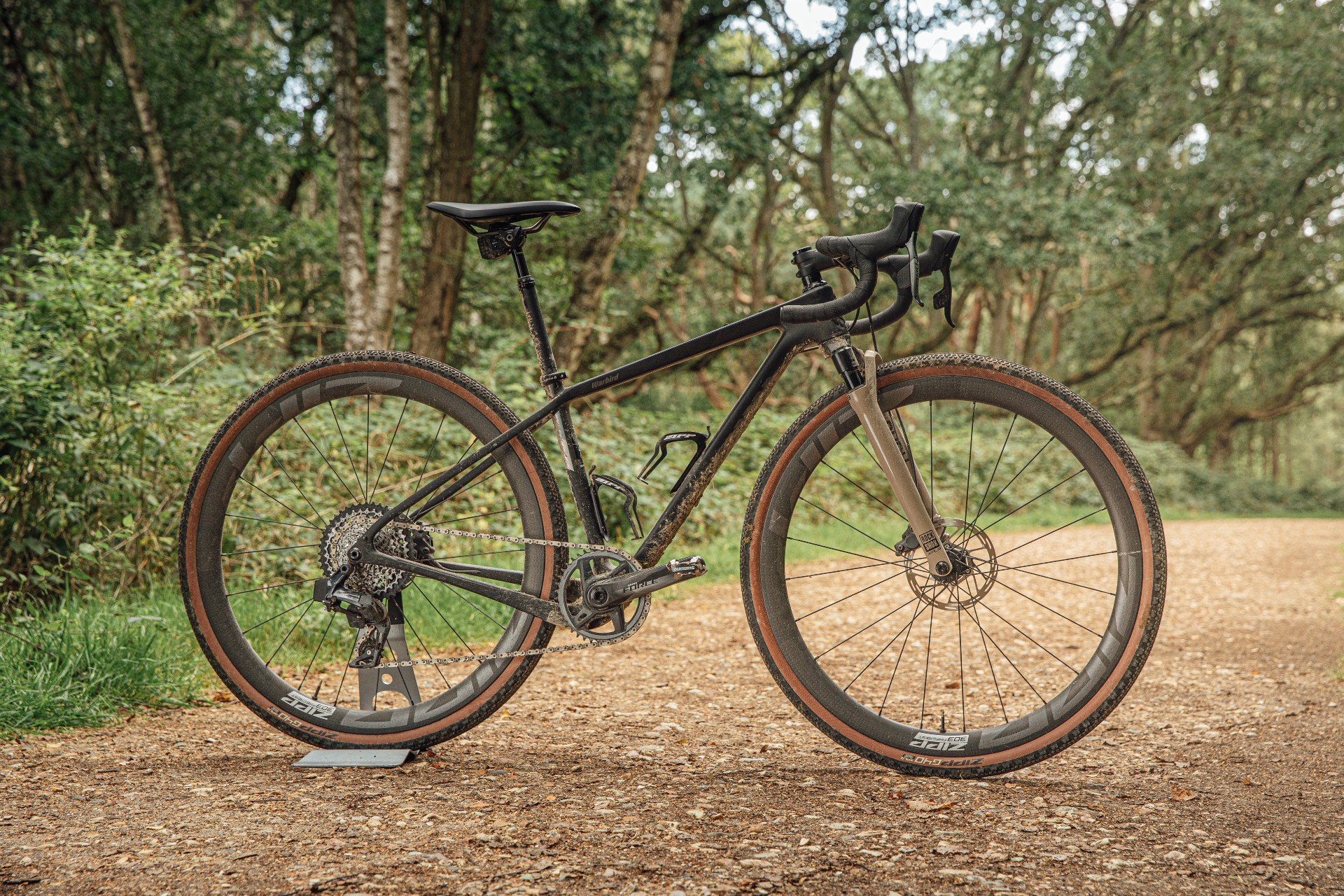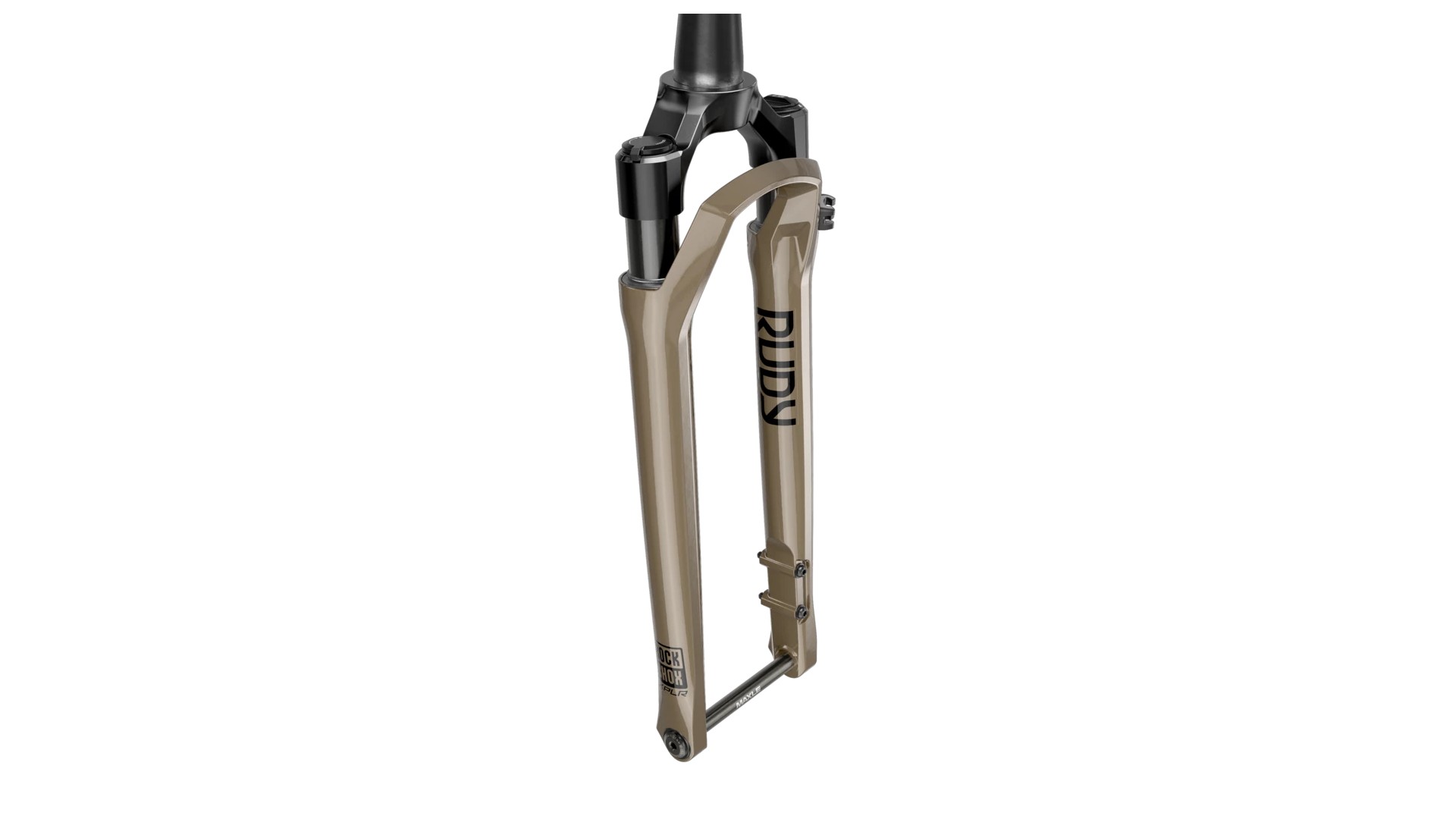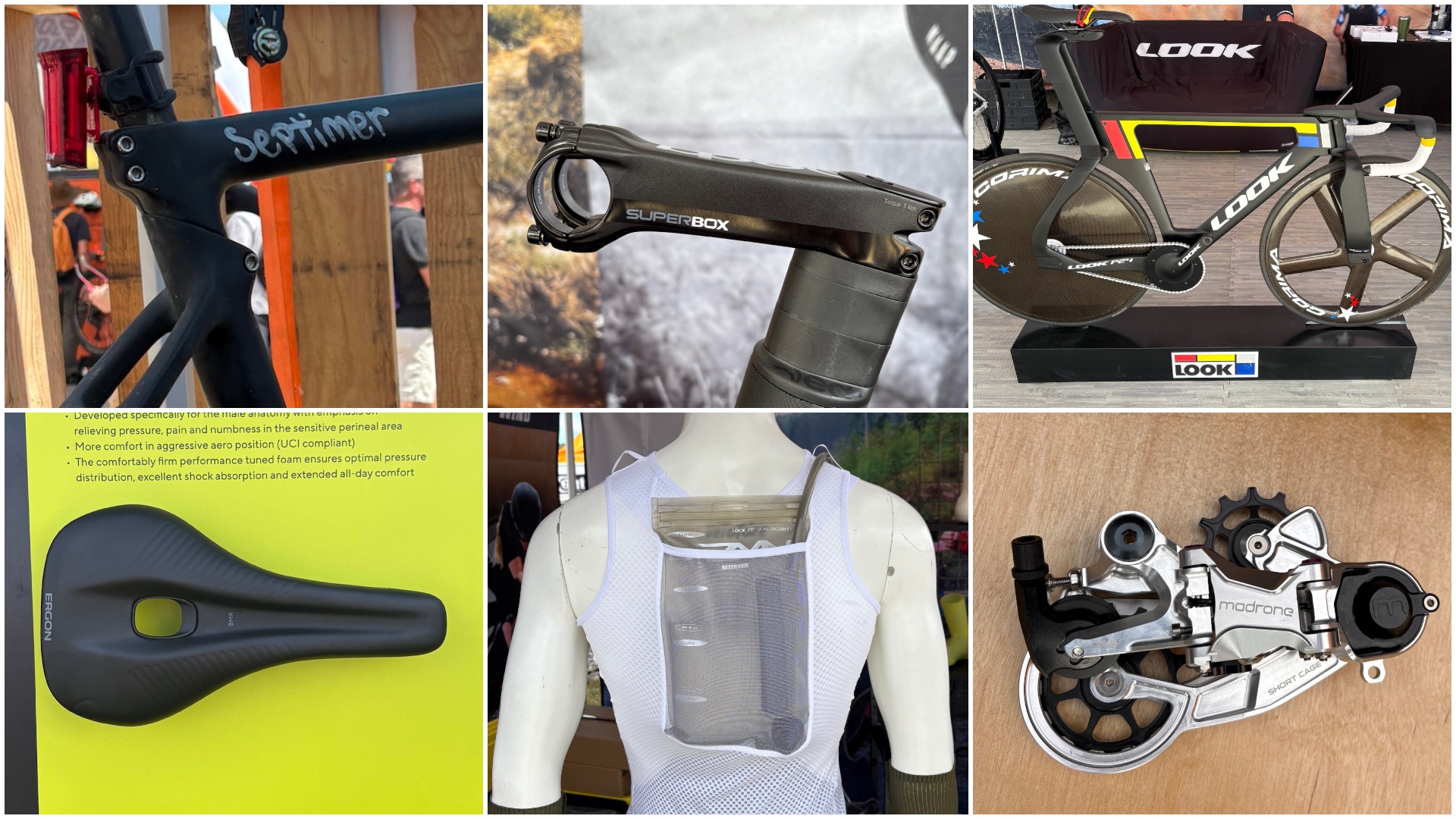SRAM Rudy Ultimate XPLR fork
An extra 30mm of travel for your gravel bike - but at what cost?

There is no denying that the Rockshox XPLR Rudy Fork made a very long, very hard gravel ride significantly less arduous and more enjoyable, and it certainly boosts control over techy sections. The weight penalty is not significant when considered alongside the extra capability on offer. However, compared to simpler solutions such as suspension stems, the price (and maintenance) hike is a major leap for not a huge boost in travel. Granted, a suspension fork will provide plushness without the control pitfalls of the cheaper option. The Rudy's worth comes down to the riding you're doing, and how much you're prepared to pay. I did encounter toe overlap using this fork - something riders on smaller frames should be aware of.
-
+
Does significantly boost compliance
-
-
Toe overlap on smaller bikes
-
-
Not much more travel than cheaper/lighter alternatives
You can trust Cycling Weekly.

Rockshox has entered gravel. With the ‘groad’ loving demographic looking to ganelier terrain each year, it was always going to happen - an air-sprung suspension fork is an obvious progression from the elastomer dampers we’ve been seeing crop up on some of the best gravel bikes. But does a suspension fork on a gravel bike step dangerously close to the ‘why not buy a hardtail’ line? Possibly, it depends upon your terrain of choice.
Rockshox, owned by SRAM, unveiled this fork alongside a cross-brand XPLR 'ecosystem', comprising of the Rudy, a dropper post, SRAM XPLR gearing and Zipp XPLR wheels.
The Rockshox Rudy Ultimate XPLR fork offers either 30mm or 40mm of suspension - the model I have on test providing the former. What it’s not designed to do is take big hits, in the way a 120mm travel fork will do. This is a solution for adding compliance without reducing control. Having used the fork over 100 miles of chalky South Downs Way, it absolutely does that. However, at an outlay and weight in excess of alternatives.
Rockshox Rudy Ultimate XPLR: construction

The Rudy Ultimate XPLR carries many of the characteristics of the brand’s Sid cross country mountain bike fork - it’s just even more paired down.
The fork utilises a Solo Air Spring, with a Charger Race Day damper and Maxima Plush Dampening Fluid. The goal is that when locked out, the fork is firm and silent.
Most mountain bike forks have both compression and rebound adjustments available. Compression adjustment can be used to determine how firm you want the suspension to be, in response to the terrain. It would be quite difficult to tune 30-40mm of suspension in this way (arguably, pointless), so the Rudy fork does not offer this, the fork is open, or locked out.
Rebound adjustment alters how quickly the fork springs back following compression. This can be adjusted, and it’s something you’d want to alter based upon your weight, ride style and terrain, this is managed via a 2.5mm Allen key bolt.
The fork is tuned via a shock pump, and it will need, according to Rockshox, a lower leg service after 50 hours, and a damper and air spring service after 200 hours.

In terms of dimensions, the stanchions measure 30mm. The axle-to-crown height is 425mm on the 30mm option, and 435mm on the 40mm option. That is higher than on most gravel bikes as standard, and this is why I have the 30mm option on test. According to SRAM that extra 10mm would overly impact the handling on a smaller bike, such as the 49mm Salsa Warbird which came with this fitted.
Rockshox designed the fork to pair with a 700c wheel, and a gravel bike tyre up to 50mm - it’s expected that the added suspension will do away with the need for a 650b wheel and wider tyre (though of course, someone will always want both, and reasonably so, I'd argue).
The Rudy fork comes with a 45mm offset, or 51mm offset. Interestingly, all of the aftermarket forks are 45mm, the 51mm option is an ‘OE’ (original equipment) option only - presumably for brands who didn’t want to dial back offset. Reduced offset is something that we’ve seen as a trend in the mountain bike world - it can keep the wheelbase short whilst aiding maneuverability. However, it can impact toe overlap (as I’ll come onto).
Finally: weight. The complete fork weighs 1,300g, with the steerer uncut. The fork that came off the test bike I have on the way - a Salsa Warbird - weighed 549g, and my fork comes in at 1,225g, so in this case, the weight penalty is 676g.
It is worth being aware of the weight penalty vs more mountain bike-orientated options - Rockshox's own Sid Ultimate weighs 1537g, but gives you 120mm of travel - so if the Sid were gravel bike compatible you'd be gaining three times the travel for only 237g extra penalty there.
The fork is compatible with 160mm or 180mm rotors with an adapter, and uses 12x100mm thru axles, with flat mount discs. It comes with mudguard compatibility for two or three bolt systems and Rockshox is offering colour match options.
Rockshox Rudy Ultimate XPLR: the ride
My initial reaction to the Rockshox Rudy Ultimate XPLR fork was to view it as a bit of a gimmick. In fact, with the fork being launched alongside a full XPLR ecosystem - including a dropper post - my expectation was that I'd find the dropper revolutionary, and the fork a bit of a damp squib. After all, is 30mm really discernible when run alongside chunky tyres at 26 PSI?
Conveniently, I had a summer plan to ride the full South Downs Way (100 miles from Winchester to Eastbourne, on chalky, rocky trails) - and it turned out that my predictions were entirely incorrect.
A post shared by Michelle Arthurs-Brennan (@ridewriterepeat)
A photo posted by on
The front end comfort when riding with the Rockshox Rudy Ultimate XPLR fork was unmistakable.
To test the theory, I rode 60 miles of the South Downs Way the preceding weekend on a gravel bike with the same 45mm width tyres, followed by the full distance seven days later. After 60 miles on a rigid set-up, my hands and wrists were battered and I had blisters. But following 100 miles (some 11 hours riding, including rain and wet chalk) with the suspension, I can honestly say I had no hand or wrist pain. And, no blisters. You can't argue with that - blisters aren't psychological or influenced by placebo expectations.
Since the two bikes were different, for a secondary check, I experimented with locking out the fork, and opening it again - and the comfort was undeniable.
The answer to the question 'does the Rudy fork reduce hand and wrist fatigue?' is a resounding yes. I even kept the lockout open when using this bike for occasional commutes - sure, it was slower, but sometimes it's nice to dawdle and enjoy a plush trip to the local farm shop (and, the roads that way are pretty rubbish).
On rocky climbs and rooted descents, the little extra control on offer from the fork no doubt helped, too, though not in an 'instant PR' way. I could definitely hit previously dangerously angled roots with more confidence, and loose rocks were easier to traverse. But the comparison experience was by no means night and day.
So far, so good. I would be happy to carry an extra 600-700g in return for the comfort and control this fork provided.
However, after a little more riding, I began to notice some pitfalls. I have the fork fitted to a Salsa Warbird, size 49cm frame. With a reach of 360mm, the bike is on the small side for me, but not out of the realm of possibility for a person of my height, or a little less (166cm). The offset on the standard Warbird is 50mm.
I first noticed toe overlap on my local trails - nothing too technical - and routes I've ridden before. This was mild, but definitely, an unpleasant side effect that I've not experienced riding the same terrain on other bikes.
A post shared by Michelle Arthurs-Brennan (@ridewriterepeat)
A photo posted by on
I then took the bike to Glentress (Scotland). Using the blue trail to reach the gravel roads at the top of the MTB centre, I struggled badly with the hairpins, my toe grating against the tyre at almost every turn.
Now, hairpin climbs at a mountain bike centre are probably not what this bike is designed for. However, adding suspension to a gravel bike does tease riders into more and more testing terrain, where toe overlap will rear its head. Having asked taller riders, on larger bikes, if they've experienced this the answer was no. It's also possible that I could fit this fork to an alternative frame and not experience the same issue - or, simply opt for shorter cranks. Still, it's something to take into account if you're on a smaller frame.
Rockshox XPLR Rudy Fork: value and conclusions
The final piece of the puzzle when assessing this suspension is the cost (and weight) vs travel argument.
The Rudy fork costs $799.00/€869.00/£779.00, and added 676g to my bike (total fork 1225g), providing 30mm of travel.
This package is cheaper and lighter than the most prominent direct competitor: the Fox AX weighs a claimed 1360g and offers 40mm of travel but costs over £900 - it does have tunable compression, however. The likes of the leaf-sprung Lauf TR Boost provides around 40mm of travel, at 1000g, costing £890.
At the other end of the scale, the Redshift Shockstop Suspension Stem will give you 20mm, but costs £149.99/$159.99, weighing around 280g (size dependant).
The experience from a suspension stem is very different when compared with a suspension fork - the latter dives under load and bobs when you climb. A suspension fork responds to the terrain and suspends the bike, not the rider - this means you'll enjoy greater control alongside comfort.
However, is it over £600 worth of greater control? It really comes down to how serious you are about performance and how deep your pockets are.

Thank you for reading 20 articles this month* Join now for unlimited access
Enjoy your first month for just £1 / $1 / €1
*Read 5 free articles per month without a subscription

Join now for unlimited access
Try first month for just £1 / $1 / €1
Get The Leadout Newsletter
The latest race content, interviews, features, reviews and expert buying guides, direct to your inbox!
Michelle Arthurs-Brennan the Editor of Cycling Weekly website. An NCTJ qualified traditional journalist by trade, Michelle began her career working for local newspapers. She's worked within the cycling industry since 2012, and joined the Cycling Weekly team in 2017, having previously been Editor at Total Women's Cycling. Prior to welcoming her first daughter in 2022, Michelle raced on the road, track, and in time trials, and still rides as much as she can - albeit a fair proportion indoors, for now.
Michelle is on maternity leave from April 2025 until spring 2026.
-
 The Sea Otter Classic: sights and sounds from the biggest bike gathering in North America - Part 1
The Sea Otter Classic: sights and sounds from the biggest bike gathering in North America - Part 1Odds and ends that run the gamut, from a $13,000 frameset to armoured kit and new hydro-vests
By Tyler Boucher Published
-
 The thing that bothers me most when I look back at old school training is that right now we’re doing something equivalently misguided
The thing that bothers me most when I look back at old school training is that right now we’re doing something equivalently misguidedOur columnist's old training diaries reveal old-school levels of lunacy
By Michael Hutchinson Published
-
 'This race is absolutely disgusting': Peloton reacts to another brutal Paris-Roubaix Femmes
'This race is absolutely disgusting': Peloton reacts to another brutal Paris-Roubaix FemmesNow in its fifth edition, Paris-Roubaix Femmes is still a tough race, even for the best bike riders in the world
By Adam Becket Published